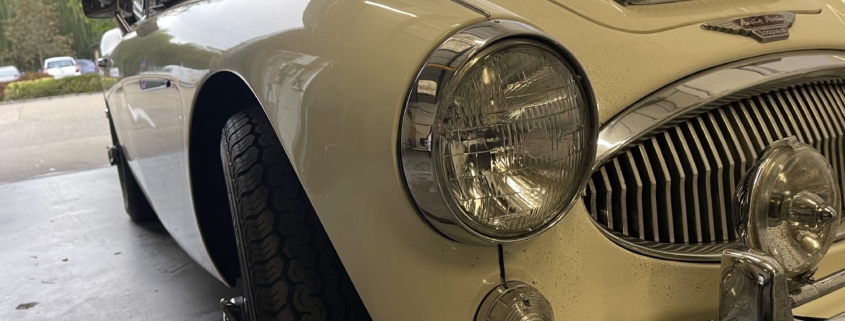Classic Cars
Classic Cars
Are you a classic fanatic?
Remember your Dad’s car? If you think hard enough you can still smell the interior, know which songs were playing on the radio and remember all its quirks whether it was a secret pocket or a particular sequence to start it up! Classic cars certainly evoke strong emotions. We’ve just had a summer full of classic car events, such as Redbourn Classics, which so many people attend and gaze at yesteryear marvelling at some stunning restorations. So, what makes us so interested in them and why are these events so popular?
What classifies as a ‘Classic’ Car?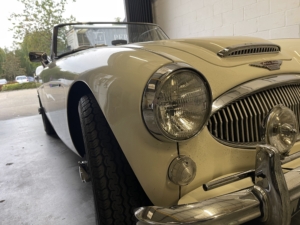
It’s a great question and the answer is not straightforward. It’s not just about age, but also rarity, historical significance, and cultural relevance. It also differ
s on region and country as well as from insurer to MOT classification!
What is termed as a classic car is therefore open to interpretation. So, below we can only broadly categorise them, recognising there is significant overlap between them:
| Year | Classification | Broad description |
| Pre-1905 | Veteran Cars | Anything pre 1905 would be considered in this category, although some use the term to cover cars up to 1918. |
| 1905-1918 | Edwardian Cars | The high-wheel motor buggy design which resembled horse drawn carriages prior to 1900 was gradually abandoned. These cars are characterised by the widespread use of brass in the vehicle’s fixtures including lighting, radiators, door handles and frames. |
| 1919-1930 | Vintage Cars | These cars are often considered collectors’ items and are often quite expensive dependent on their condition.
Vintage cars are characterised by their simple design and lack of modern features. Vintage cars were also produced in much smaller numbers making them rarer and more valuable. |
| 1931-1945 | Post Vintage Thoroughbred Cars | Certain makes of quality and sporting cars built in the years between 1930 and World War II. |
| 1940-1950’s | Classic Car | Classics can come from any era, but they’re usually associated with the golden age of automotive design – typically spanning from 1940’s to 1960’s.
An older car that is cherished for its style, design, and long-standing appeal. They have an enduring quality, meaning they’ll continue to be sought after by collectors and enthusiasts for years to come. They have a timelessness about them.
|
| Pre-1978 | Antique Car | This is a term used by the Antique Automobile Club of America to describe cars of at least 45 years old and includes cars, trucks, trains, and bicycles!
Typically noted for their simplicity and lack of modern features. They may also have unique design elements that were popular during their era such as wooden spoke wheels or hand-crank starters. |
| 1980-2000 | Modern Classic Cars | Modern classics are different in their design, components, handling, and safety. Technologically, newer vehicles usually contain a central computer, sensors, and sophisticated systems. Modern engines are much smarter, smaller, more powerful, and more efficient. |
Understanding the difference between these types of cars can help us all appreciate their unique qualities and their place
in automotive history, but its significance is less to do with classifying cars, but in their overall desirability to collectors and enthusiasts.
A vehicles classification becomes important when considering the practicalities around MOT, Tax and Insurance. And it is no surprise that different bodies classify them differently.
For instance, HMRC considers a classic car to be at least 15 years old, with a market value greater than the list price and at least £15,000.
MOT Exemption
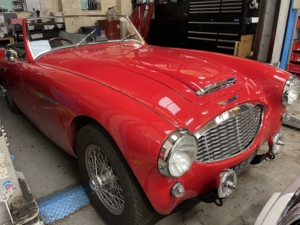
Classic cars are MOT exempt if:
- The vehicle was built or first registered more than 40 years ago
- No substantial changes have been made to the vehicle in the last 30 years, (ie, replacing the chassis, body, axles, or engine to change the way the vehicle works)
However, the vehicle must be safe to drive and in a roadworthy condition, otherwise you risk fines of up to £2,500 and 3 penalty points against your license. So, keeping your classic roadworthy is as paramount as a modern car.
Even if the MOT is not a legal requirement, you can still get it tested if you wish. However, most owners prefer to check over the more common issues themselves or take it for a pre-MOT check or continue to have it regularly serviced as parts are still prone to corrosion and failure even when not in use.
Vehicle Tax Exemption
You will be exempt from vehicle tax if your vehicle is 40 years old on the 1 January of that year and will take effect from the April. Ie, a vehicle registered before 1 January 1983 will be exempt from 1 April 2023. This does not apply if the vehicle is used commercially or for hire and reward.
You will have to apply for a tax vehicle exemption (also known as ‘putting your car in the historic tax class’ or ‘having it declared a Vehicle of Historic Interest’ (VHI). This can be done at the Post Office with your log book (V5C), a valid MOT certificate or a completed V112 form showing that your vehicle is exempt from the MOT check.
If you continue to use the vehicle on the public highway, you will need to still register for tax even though you do not have to pay.
Insurance
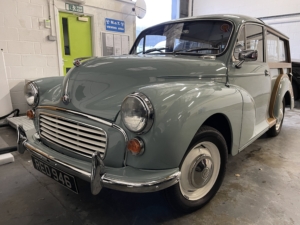
The view of a specialist classic car insurer is that the vehicle is kept in pristine condition and only driven a few days a year and usually in good weather. They suspect it is kept in a safe location to protect its value. Their view of the driver is that they are usually experienced and take great care of their car and the way it is driven.
These assumptions mean classic cars are considered lower risk and the insurance premiums reflect this. In fact, The Money Expert suggests that it is often less than half the price.
Insurers define a classic car according to how it’s used and kept. To make the most of lower premiums, generally your car should be:
- Be more than 15 years old.
- Driven less than 2,000-5,000 miles a year.
- Kept in mint condition and stored in a garage, drive, or specialist lock-up.
- Used as a second car and not as a daily runaround.
- Owned and driven by someone usually 25 or older.
A policy will cover all the usual risks, plus cover while it is restored, displayed at a vintage car show (including public liability), used on a track day (if needed), and for travel abroad.
Membership of a classic car club can bring down your insurance premium as the majority enjoy discounts. It’s also appealing to be able to discuss your vehicle with other enthusiasts who will exchange ideas, stories and know where to get those all-important parts should one of yours fail.
Should your car become a write off, normally insurance companies use the market value to pay out. But classic cars are not that easy to value, so you agree a value before the policy starts known as the ‘agreed valuation’.
Modifications on these cars are usually to preserve the car or to retain its roadworthiness. They are very rarely to make it go faster, so usually push up the premium as the car becomes more valuable and desirable. A high quality respray could push up the value by £2,000-3,000.
Why to People own Classic Cars?
For some it is an investment in a piece of history. For others it brings back memories from the past.
They are often easier and cheaper to maintain than a newer car and have a sense of character about them. For many they are second cars that are kept in pristine condition and stored appropriately for the winter in readiness for the many sociable classic car shows that take place during the summer months.
The only difficulty may be in sourcing parts and mending, or finding replacement, plastic that become brittle over time. During the winter, the cars need to be prepared properly for storing to avoid damage and corrosion.
Whatever the reason, you can be sure it will be a source of great pride.
Why are there so many classic car shows?
For many, it’s an irresistible step into the past. A chance to look at the curvature of the body panels, the highly polished brass, steel spokes, clean engines, or fascinating modifications. For some it’s an excuse to get out into the sunshine and meet people and exchange stories.
It promotes a sense of nostalgia, and you can often hear ‘I remember these, my dad had one when I was a child’… and then they’ll go on to tell you about a day out in the car and all that happened that day. The conversation ends, and you both end up with a warm smile and newfound knowledge that at some point 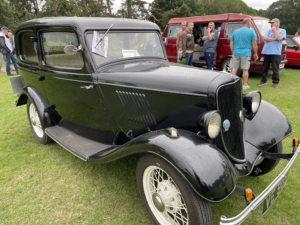 this car was at the centre of that person’s world and, by displaying it, has allowed them to recreate all the feelings they had when they owned one. The memories are astonishingly vivid and well worth listening to.
this car was at the centre of that person’s world and, by displaying it, has allowed them to recreate all the feelings they had when they owned one. The memories are astonishingly vivid and well worth listening to.
Owners and enthusiasts alike come together to marvel at pieces of history, sharing their pride and joy and restoration journeys with others… and if you’re lucky, you may even win a prize for best in show!
Each classic car show will have its own rules and regulations on the type of vehicle they would consider exhibiting, so it is always worth checking first.
Since its inception in 2017, we have been very proud sponsors of Redbourn Classics Motor Show and we also dedicate our time as part of the organising committee. We meet all year round to produce a fantastic family event. The event continues to go from strength to strength and is an incredibly valued fundraiser for the village. Find out more here: www.redbournclassics.co.uk
In the meantime, look after your classic cars and if you need any help with maintaining yours, to keep it roadworthy and legal, give us a call!

